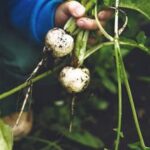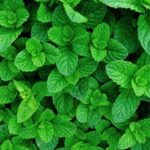Are you interested in growing your own vegetables on the North Coast? North Coast vegetable gardening offers a unique set of challenges and rewards for enthusiasts. From choosing the right vegetables to maximizing limited space, there are many factors to consider. This article will provide valuable information on soil preparation, pest management, watering techniques, and year-round gardening tips specific to the North Coast region.
With its cool, wet climate and rich soil, the North Coast is an ideal environment for vegetable gardening. However, it’s important to carefully select which vegetables to grow in this region to ensure success. This article will explore the best practices for choosing and cultivating vegetables that thrive in the North Coast climate.
Soil preparation and maintenance are crucial components of successful vegetable gardening in any region, and especially so on the North Coast. Proper soil management can make all the difference in growing healthy and bountiful crops. This section will cover essential tips and techniques for preparing and maintaining soil specifically tailored to the unique conditions of the North Coast.
Choosing the Right Vegetables for the North Coast Climate
When it comes to vegetable gardening on the North Coast, it’s important to choose the right vegetables that are suited for the specific climate and growing conditions of the region. The cool, moist climate of the North Coast can be challenging for certain types of vegetables, but with the right selection, you can still have a successful and bountiful garden.
Understanding the North Coast Climate
The North Coast region is known for its mild temperatures, abundant rainfall, and coastal influences. When choosing vegetables for your garden, it’s important to consider these factors and select crops that can thrive in these conditions. Cool-season crops such as lettuce, kale, broccoli, and Brussels sprouts are well-suited for the moderate temperatures and moisture levels found in this region.
Recommended Vegetable Varieties
Some recommended vegetable varieties for North Coast vegetable gardening include Heritage tomatoes, Paris Market carrots, Oregon Sugar Pod peas, and Rouge d’Hiver lettuce. These varieties have been specifically selected for their ability to perform well in cooler climates with ample moisture. Additionally, root vegetables like potatoes and radishes also do well in the North Coast region due to their preference for cooler temperatures.
Considerations for Coastal Gardening
For those living closer to the coastline on the North Coast, it’s important to consider the additional challenges that come with coastal gardening such as salt spray from ocean winds. Selecting salt-tolerant varieties of vegetables such as Swiss chard or spinach can help mitigate these challenges and ensure a successful harvest. It’s also advisable to provide windbreaks and use raised beds or containers when planting near the coast.
By carefully selecting the right vegetables that are suited for the North Coast climate, you can set yourself up for a thriving garden with an abundant harvest despite the unique challenges posed by this region’s environmental conditions.
Soil Preparation and Maintenance for Successful Vegetable Gardening
One of the most crucial aspects of successful North Coast vegetable gardening is proper soil preparation and maintenance. The climate and soil conditions in the North Coast region can be challenging for growing vegetables, but with the right approach, you can create a healthy and productive garden. Here are some essential tips for soil preparation and maintenance in North Coast vegetable gardening:
- Test your soil: Before planting any vegetables, it’s important to test your soil to determine its pH levels and nutrient content. You can purchase a DIY home soil testing kit or send a sample to a local agricultural extension service for professional analysis.
- Amend the soil: Depending on the results of your soil test, you may need to amend the soil with organic matter, such as compost or well-rotted manure, to improve its fertility and structure. Adding organic matter can also help improve drainage in heavy clay soils or increase water retention in sandy soils.
- Mulch regularly: Mulching is important for retaining moisture, suppressing weeds, and moderating soil temperature. In the North Coast region, where summers can be hot and dry, using mulch is especially beneficial for conserving water and protecting plant roots from extreme temperatures.
- Rotate your crops: To prevent nutrient depletion and reduce the risk of pests and diseases, practice crop rotation by planting different types of vegetables in different areas of your garden each season.
By following these steps for soil preparation and maintenance, you can create an optimal growing environment for your North Coast vegetable garden. Taking care of your soil will not only benefit your current crops but also contribute to long-term garden health and productivity.
Best Practices for Watering and Irrigation in North Coast Vegetable Gardening
Watering and irrigation are essential aspects of successful vegetable gardening in the North Coast region. The climate in this area can vary, but generally, it tends to be cool with regular fog and light rain, making watering a critical consideration for gardeners. Proper watering techniques are vital to ensuring healthy, thriving plants.
One important factor to consider is the type of vegetables being grown. Some vegetables, such as peppers and tomatoes, require more consistent watering, while others, like root vegetables, can tolerate drier conditions. It’s crucial for North Coast vegetable gardeners to understand the specific water needs of the plants they are cultivating.
In addition to choosing the right vegetables for the climate, using efficient irrigation methods is key. Drip irrigation systems are particularly effective in this region as they provide a slow, steady supply of water directly to the roots of the plants. This method not only conserves water but also reduces weed growth and minimizes moisture-related diseases. Raised beds can also improve drainage and reduce water waste, both of which are beneficial in North Coast vegetable gardening.
Lastly, monitoring soil moisture is essential for successful vegetable gardening in the North Coast. Gardeners should regularly check the soil to ensure it remains consistently moist but not waterlogged. The use of mulch can help retain moisture and reduce evaporation while also preventing weeds from competing for water with vegetable plants.
| Vegetable | Watering Needs |
|---|---|
| Peppers | Consistent watering |
| Tomatoes | Regular watering |
| Root vegetables | Tolerate drier conditions |
Dealing With Common Pests and Diseases in North Coast Vegetable Gardening
North Coast vegetable gardening comes with its challenges, particularly when it comes to dealing with common pests and diseases that can wreak havoc on your carefully nurtured plants. However, with the right knowledge and tools, you can effectively manage these issues and protect your vegetable garden.
Some of the most common pests to watch out for in North Coast vegetable gardening include aphids, caterpillars, slugs, snails, and thrips. These pests can cause damage to your plants by feeding on the leaves or stems, sucking sap from the plant, or transmitting diseases. To combat these pests, consider using natural predators such as ladybugs or lacewings, implementing barriers like row covers or copper tape to deter slugs and snails, or using organic insecticidal soaps or neem oil.
In addition to pests, North Coast vegetable gardening enthusiasts also need to be vigilant about potential diseases that can affect their crops. Some common diseases in this region include powdery mildew, blight, and damping off.
To prevent these diseases from taking hold in your garden, ensure proper spacing between plants to promote air circulation, water the soil at the base of the plant rather than overhead to avoid wet foliage, and remove any infected plant material promptly. Incorporating disease-resistant varieties into your garden can also help mitigate the risk of widespread disease issues.
Helpful Tips for Managing Pests and Diseases in North Coast Vegetable Gardening
- Regularly inspect your plants for signs of pest infestation or disease
- Maintain a clean garden by removing weeds and debris that could harbor pests and pathogens
- Rotate your crops each season to reduce the build-up of pests and diseases in the soil
- Encourage beneficial insects such as pollinators and natural predators to establish a healthy ecosystem in your garden
Maximizing Limited Space for Vegetable Gardening in the North Coast
When it comes to vegetable gardening in the North Coast, space can often be a limiting factor, especially for those living in urban areas or small homes. However, there are several strategies that can be employed to maximize the use of limited space and still enjoy a bountiful harvest. One popular method is square foot gardening, where vegetables are planted in raised beds divided into square foot sections, allowing for more efficient use of space.
Vertical gardening is another effective way to make the most of limited space in North Coast vegetable gardening. By utilizing trellises, vertical planters, and hanging baskets, gardeners can grow a wide variety of vegetables without taking up valuable ground space. This is particularly beneficial for those with small yards or balconies.
In addition to square foot gardening and vertical gardening, container gardening is also a great option for those with limited space in the North Coast region. Many vegetables can thrive in containers, including tomatoes, peppers, lettuce, and herbs. This allows gardeners to place their containers on patios, decks, or even windowsills to take advantage of available sunlight.
| Vegetable Gardening Method | Advantages |
|---|---|
| Square Foot Gardening | Efficient use of space; easy to maintain |
| Vertical Gardening | Limited ground space required; variety of vegetables can be grown |
| Container Gardening | Ideal for small spaces; versatility in placement |
Tips for Year-Round Vegetable Gardening in the North Coast Region
Year-round vegetable gardening in the North Coast region presents its own set of challenges and opportunities. With the mild, maritime climate of the North Coast, it is possible to cultivate a variety of vegetables throughout the year with proper planning and care. Whether you are a seasoned gardener or just starting out, here are some tips to help you make the most of your year-round vegetable gardening efforts in the North Coast region.
Understanding Your Growing Season
One of the first steps to successful year-round vegetable gardening in the North Coast is to understand your specific growing season. While the climate may be mild, there are still distinct differences between cool-season and warm-season vegetables.
Knowing when to plant each type of vegetable will greatly contribute to your success. Cool-season crops such as kale, carrots, and lettuce thrive in cooler temperatures and can be grown during spring and fall, while warm-season crops like tomatoes and peppers should be planted during warmer months.
Utilizing Season Extension Techniques
To extend your vegetable growing season in the North Coast, consider utilizing season extension techniques such as cold frames, row covers, or greenhouses. These methods can protect your plants from frost and cold temperatures during the winter months, allowing you to continue harvesting fresh produce well into the colder seasons. Additionally, using mulch and cloches can help retain soil warmth and protect plants from temperature fluctuations.
Succession Planting
In order to maintain a continuous harvest throughout the year, consider practicing succession planting. This involves planting new crops as soon as old ones are harvested. By staggering your plantings, you can ensure a steady supply of fresh vegetables throughout the entire year. This method also helps optimize space by allowing for multiple crops to be grown in the same area consecutively.
By implementing these tips for year-round vegetable gardening in the North Coast region, you can enjoy a bountiful harvest regardless of the season. With careful planning and consistent maintenance, you can make your vegetable garden a thriving source of fresh produce all year long.
Community Resources and Support for North Coast Vegetable Gardening Enthusiasts
In conclusion, North Coast vegetable gardening offers a unique set of challenges and rewards for enthusiasts in the region. With the right knowledge and preparation, it is possible to have a successful and thriving vegetable garden despite the coastal climate. By choosing the right vegetables, preparing and maintaining the soil properly, implementing effective watering practices, and dealing with common pests and diseases, individuals can enjoy a bountiful harvest year-round.
One of the keys to successful North Coast vegetable gardening is maximizing limited space. Through creative solutions such as vertical gardening or utilizing raised beds, individuals can make the most of their available space. Additionally, taking advantage of community resources and support can be invaluable for North Coast vegetable gardening enthusiasts. Whether it’s joining a local gardening club or seeking advice from fellow gardeners, having access to a network of like-minded individuals can provide valuable tips and encouragement.
Frequently Asked Questions
What Vegetables Grow Well in a North Facing Garden?
Vegetables that grow well in a north-facing garden are those that can tolerate partial shade and cooler temperatures. Some examples include leafy greens like spinach and lettuce, as well as root vegetables such as carrots and beets.
What Is the Best Month to Start a Vegetable Garden?
The best month to start a vegetable garden depends on your specific location and climate. In general, for most regions in the northern hemisphere, starting a vegetable garden in late spring, around mid to late May, is ideal as the soil has warmed up and the risk of frost has passed.
What Vegetables Are Easy to Grow in the Pacific Northwest?
In the Pacific Northwest, vegetables that are easy to grow include kale, Swiss chard, broccoli, cauliflower, and Brussels sprouts. These cool-season crops thrive in the region’s mild and moist climate, making them relatively low-maintenance options for gardeners in this area.

If you’re looking to get into vegetable gardening, or are just looking for some tips on how to make your current garden better, then you’ve come to the right place! My name is Ethel and I have been gardening for years. In this blog, I’m going to share with you some of my best tips on how to create a successful vegetable garden.





